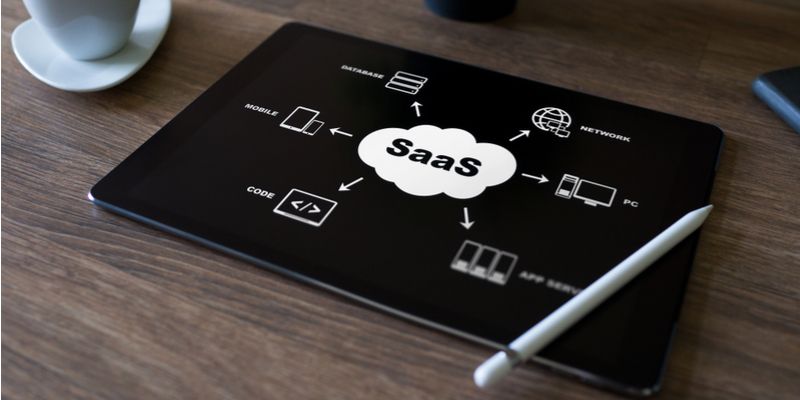Why bootstrapping your SaaS business is a great idea
Today, India is a fertile ground for SaaS startups looking to get bootstrapped. There is a huge pool of technical and managerial talent, looking for challenging opportunities.

Venture capital funding is at an all-time high in India. In 2017, Indian companies received VC/private equity funding to the tune of $17.6 billion, with Japan’s Softbank investing nearly a quarter of that amount in Flipkart, Paytm, and OYO. It would appear as if nearly every tech-based startup is backed by VC funds these days and if you want to make it to the big leagues, you need VC money, period.
But a closer look reveals that this claim is not quite true. Bootstrapping may not only be a viable alternative to VC funding, but it might also actually be your ticket to startup success.
Consider Sridhar Vembu’s Zoho, which lies comfortably in the multi-billion dollar valuation field, while being guarded assiduously from external funding for nearly two decades now. Similarly, Paras Chopra’s Wingify, which has an ARR of $18 million, was bootstrapped.
One could go on. The list of companies that were built from the ground up, without being funded by VCs, is quite a long one. If you do decide to go through it, a common pattern emerges: a majority of these businesses are B2B SaaS (Software as a Service) ones.
Developing a world-class product alone does not guarantee that you will get funded. It does not guarantee that you will succeed if you decide to go the bootstrap route either. But the current tech business scenario in India does suggest that you might just have an easier time if you’re a bootstrapped SaaS startup in this country.
Going the B2B Route
Lower customer acquisition costs
In B2C startups, the transaction size is generally very small. You have to reach out to tens of thousands of customers in order to reach a sustainable revenue.
For a SaaS business, a few initial customers are all you need to start earning a few thousand dollars per month. The customer acquisition cost per dollar of revenue is, thus, much lower for SaaS businesses when compared to that for B2C startups. This allows for no VC sustainability.
Lower churn rate
In the B2C sector, the price is perhaps the most significant of the factors that affect a consumer’s purchase decision. Take ecommerce, for instance: price wars are rampant here. Flipkart and Amazon are selling the same product, with price as the only differentiating factor. The consumer will waste no time in switching over from one seller to the other if the latter is offering the desired product at a lower price. The point is that owing to price-based competition, the churn rate is quite high for B2C businesses in most sectors. Being externally funded sometimes gives businesses in these scenarios a shield against the constantly increasing costs.
In B2B SaaS, however, your buyers are not particularly-price sensitive and the churn rate is massively reduced owing to this reason.
Not ‘a winner takes it all’ market
The aforementioned price wars and relative homogeneity of offerings renders B2C sectors fertile for monopoly or at the very least an oligopolistic market situation. There are a few enormous companies who take away the biggest pieces from the pie, if not the whole thing. Entering such a market is deemed foolish because of how little scope of profitability there is.
In B2B, and especially when it comes to SaaS, it is hardly ever a winner-takes-it-all scenario. A software that can solve a problem for Company A cannot necessarily do the same for Company B. More often than not, custom integrations and modifications have a significant part to play in the software fit for a company. This allows multiple players to co-exist in the same market, catering to the unique and specific needs of various types of businesses.
Choosing the SaaS model over the perpetual license software model
Selling, marketing, managing, and developing a SaaS offering is easier than doing the same for a perpetual license software. There’s a reason consumers prefer cloud-based SaaS solutions over perpetual license software. It’s cheaper, more convenient, and they only pay for the features they actually need. As a consequence, the initial earnings may be low for a SaaS seller but soon the recurring income surpasses the monthly expenses. For a perpetual license software, only a small percentage of the revenue comes from old customers, which also increases the dependence on external funding. SaaS is undeniably an easier sell because it is more scalable and customisable. Bootstrapping a SaaS product, therefore, is not a bad idea due to the relative regularity of the revenue afforded by the subscription model.
Bootstrapping your SaaS business in India
Today, India is a fertile ground for SaaS startups looking to get bootstrapped. There is a huge pool of technical and managerial talent, looking for challenging opportunities. This makes the cost of development of the product a fraction of the cost that it would take elsewhere in the world. The cost of servicing and providing support is also lower for India-based SaaS companies.
Overall, there is an incredible margin of profit because, despite the lower development costs, Indian SaaS businesses are able to sell the product at prices that are internationally competitive. The key is to nail a niche and do it well.
(Disclaimer: The views and opinions expressed in this article are those of the author and do not necessarily reflect the views of YourStory.)






